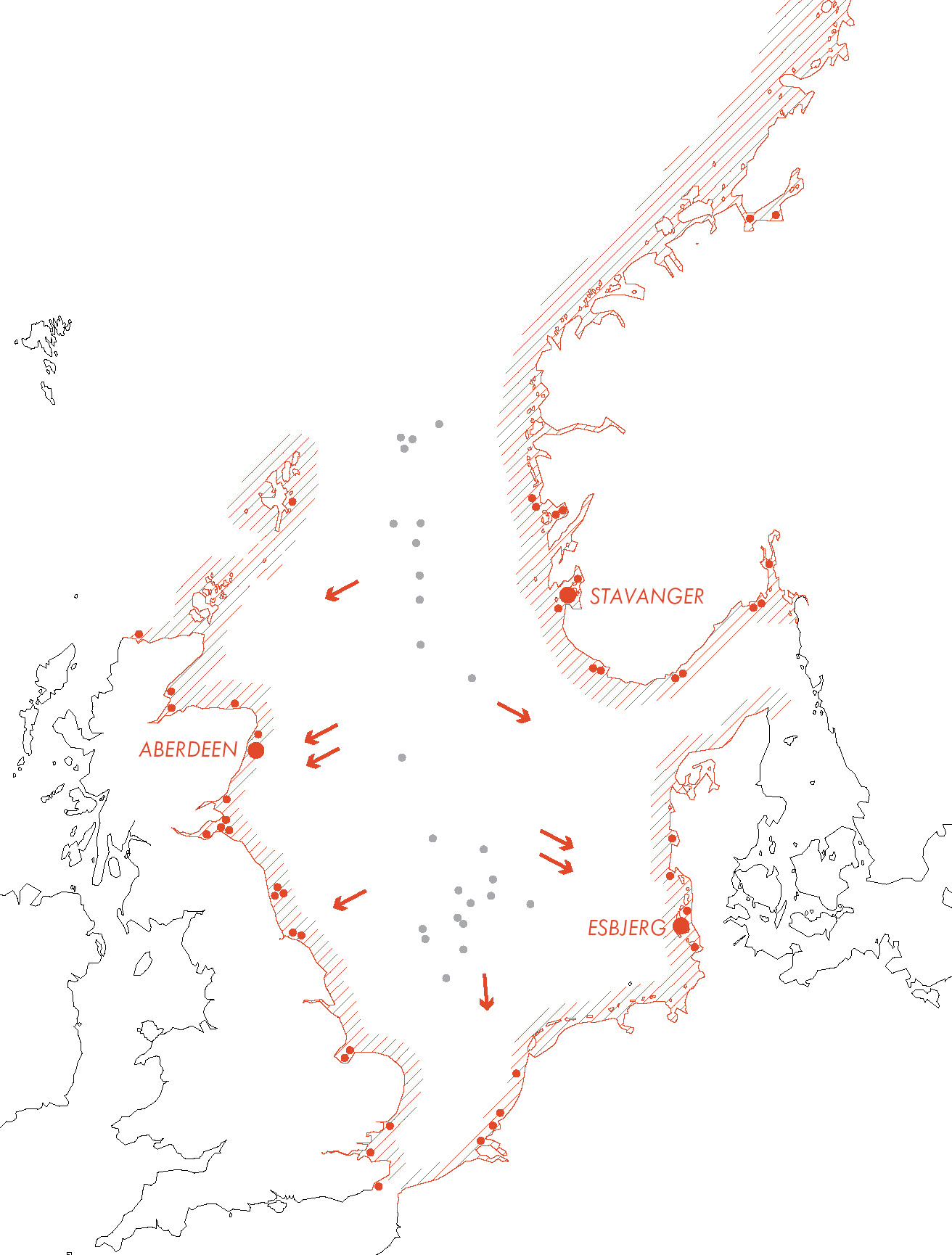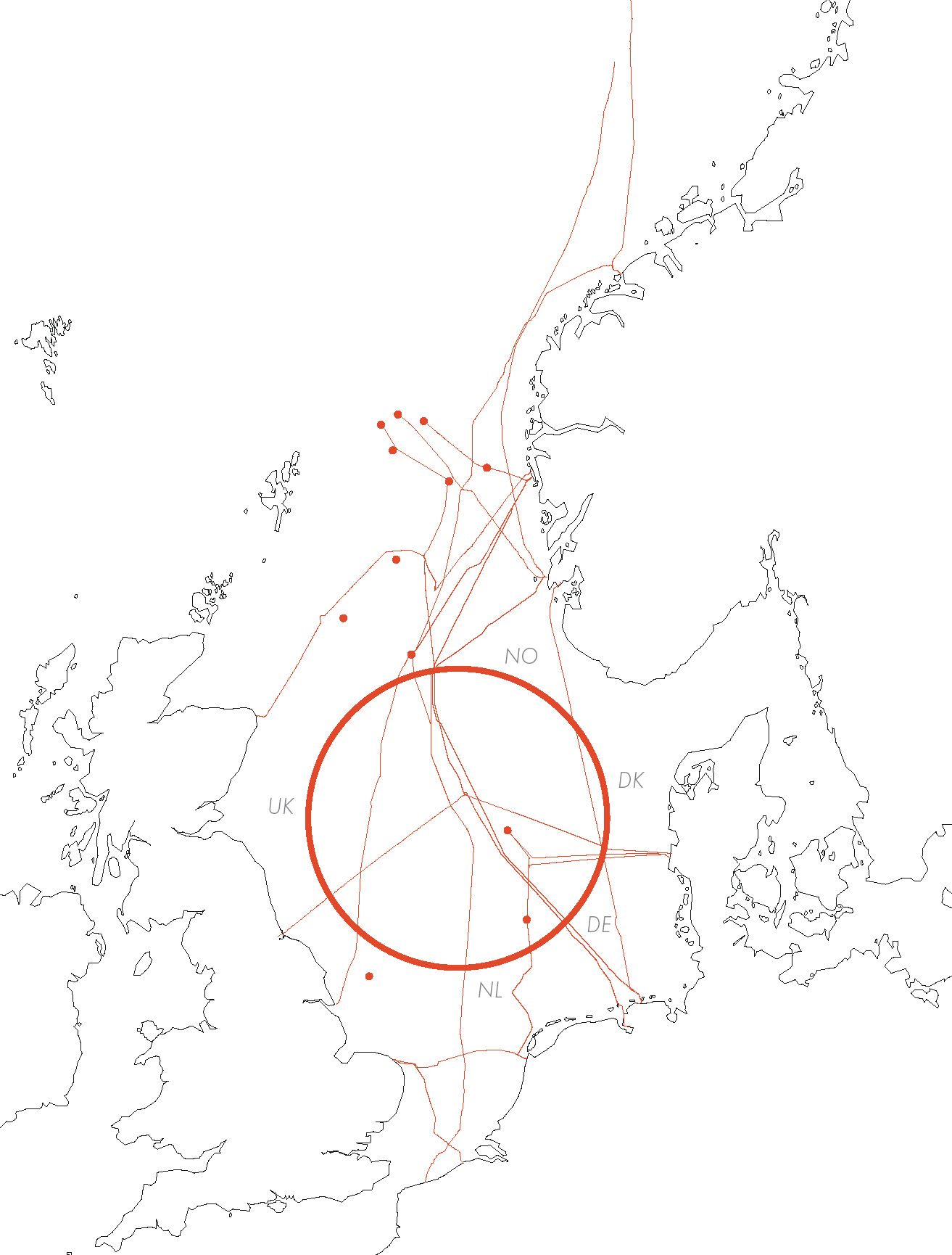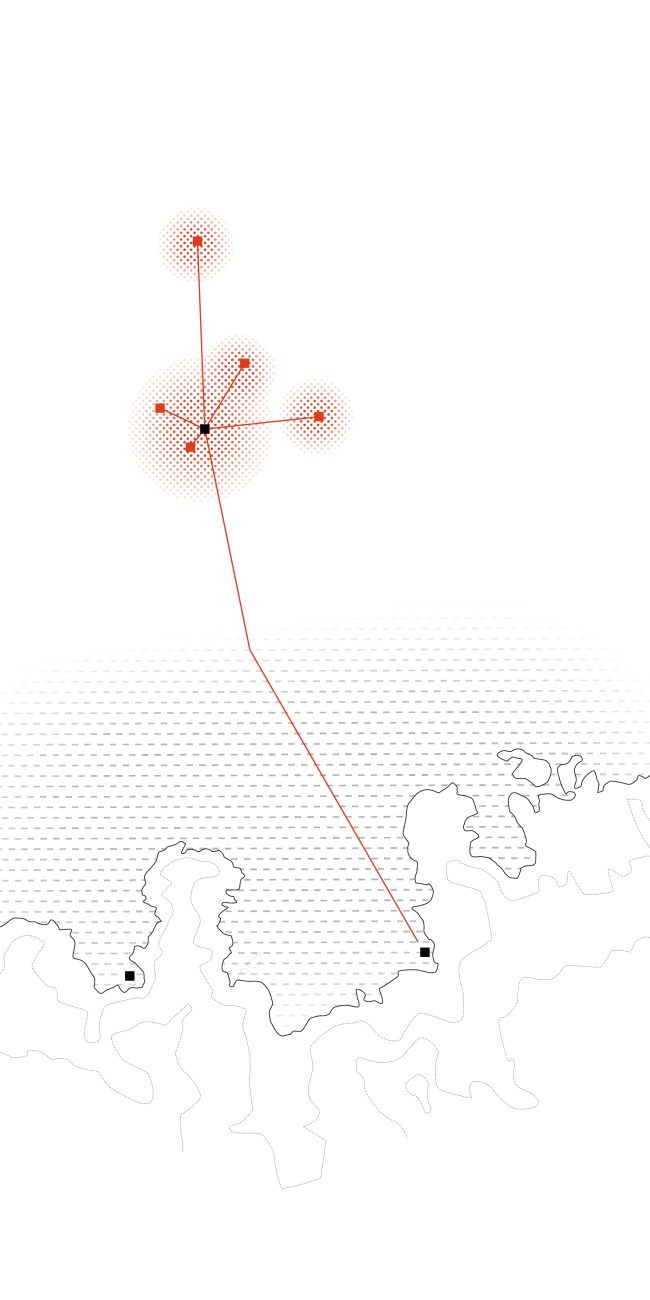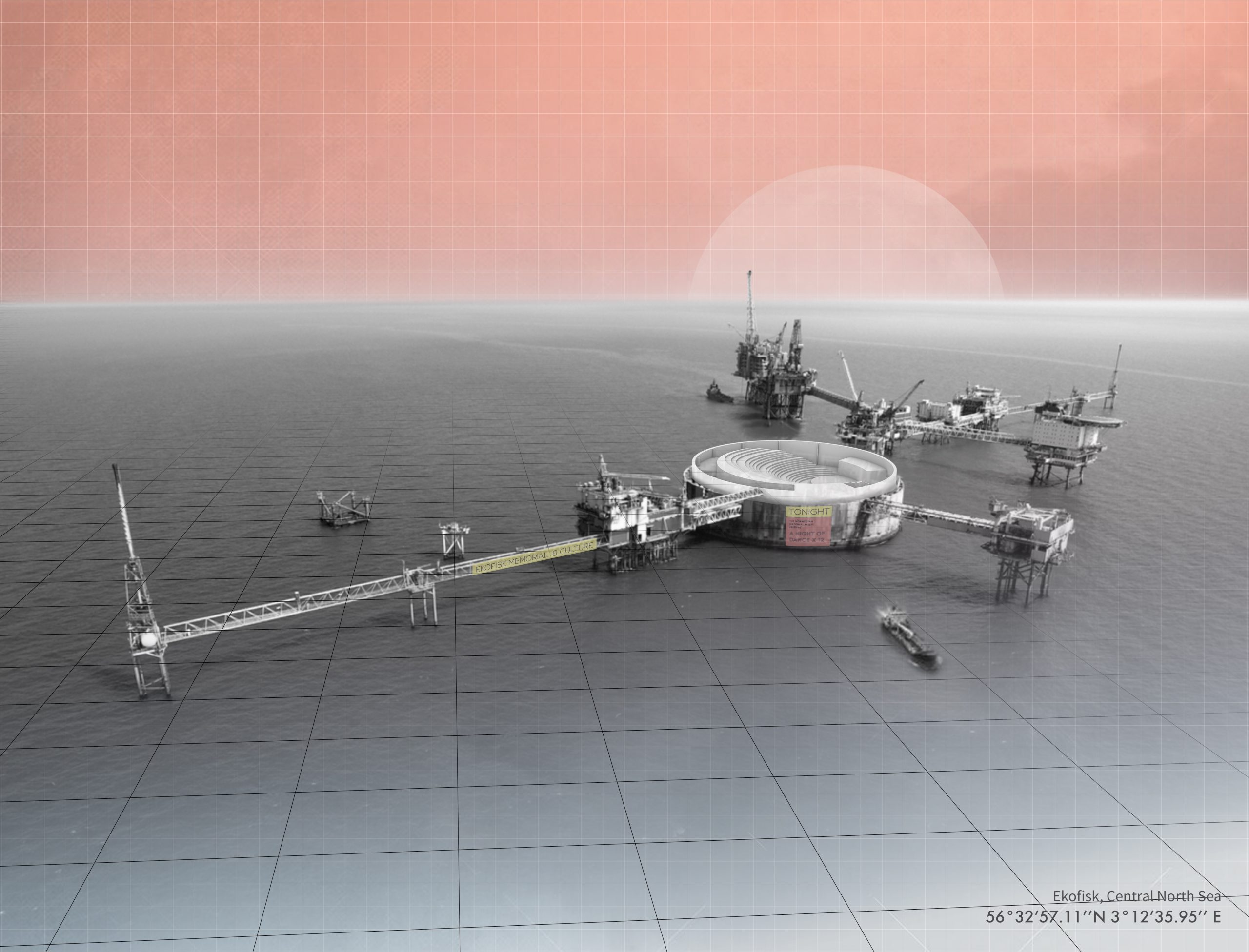Post Oil
When the era of fossil fuels is coming to an end, a vast number of physical structures developed for the purpose of oil extraction will remain unused.
In the next decades, numerous obsolete and abandoned oil rigs will subsequently brought ashore for dismantling, revealing the so far unseen drosscape of the North Sea. The heritage of northern European oil nations will ‚return home’ with an immense potential to be adapted and transformed.
Education and Accessibility
Strategies of Reuse
The concept of altering drosscape, by utilising new social program, can be applied to displaced oilrigs in a large scale. The exploration of their visual, functional and experiential potential result in a North Sea wide strategy of reuse, addressing political, environmental, economic and socio-cultural questions. The aim is to develop a sustainable transformation concept for unused offshore facilities in order to emphasize the cultural heritage values on one hand, and to exploit the immense architectural potential of these structures on the other hand. Four interlocking strategies of reuse on the topics of cultural heritage, science, tourism and sustainability with a focus on education and communication as well as accessibility and experience are the result.

Cultural Heritage
The strategy of translocation is the starting point in the scenario of reusing abandoned oilrigs. The North Sea-wide approach will enrich the socio-cultural environment in selected coastal areas. The offered space can be adapted and utilized, and a physical connection to the industrial heritage of the oil producing countries will be established. The main strategy will focus on smaller Jack up rigs, steel jackets and semi-submersible platforms that will be placed temporarily in urban environments. In order to contribute to the role of Esbjerg, Stavanger and Aberdeen as the European oil capitals, a permanent monument will be installed. In the special case of Stavanger, the reuse of a returned concrete platform to its origin is conceivable due to the geographical advantage of the depth of the neighbouring Hafrsfjord.

Science
The sea is a crucial source of knowledge, whose resources have barely been explored. To establish a cross-national network of marine science centers in the North Sea, which provides state of the art research facilities with education and training programmes, is therefore the main focus of the marine spatial plan. Each site offers a specific framework of environmental features and therefore varies in the topics of research. The offshore research centers invites the scientific community, as well as policy makers, organizations, the industry and the interested public to address elementary research questions and environmental issues, and to achieve pan-European goals in terms of a sustainable future.

Tourism
The North Sea is characterized by the transition of the sea climate of the northeastern Atlantic and the continental climate of Europe. Depending on the dominance of one of the two climate regimes, the Sea has a very high degree of variability. From the shallow waters of the southern area to the edge of the continental slope in the glacial boreal region, tourists can experience the mutable nature of the North Sea, while visiting an offshore memorial, as well as several marine research center, which will be accessible to the public. The visual and physical experience of traveling as well as the exchange with experts in an participatory scientific approach will form people‘s understanding of the seascape North Sea.

Sustainability
A joined energetic system in a macro regional scale describes the ecological strategy within the marine spatial plan. Thereby the remaining concrete structures in the North Sea have a great potential to assist the objective of the European Green Deal of the European Union (EU), which aims to cut emissions by 80 to 95 percent by 2050.2 The opportunity to transform components of the offshore fossil fuel industry, such as pipelines, storage cells and platforms, for carbon storage, green power plants and renewable energy transition is a great contribution to the urgent challenge for a climate neutral infrastructure within the EU. The transboundary energy system calls for vast collaboration among adjacent countries, which will redefine the role of the Sea as unifying space.
Action Plan
Scenario Development and Visioning

Translocation
While abandoned concrete structures will stay in place, the amount of unused steel facilities in need for transition will dramatically increase within the next ten years. In the waiting line for the process of dismantling, these structures will temporarily be placed in highly deprived coastal areas among adjacent countries.

Reprogramming
The replaced industrial structures are offering a highly adaptable space with great architectural and aesthetic qualities to the interested public. Depending on the area of action, a specific onshore program will be implemented addressing individual needs of the region.

Stimulating
In the stimulating process of transformation and appropriation the replaced steel structures become a new central hub, attracting more people to participate. The local tourism sector will be encouraged through the implementation of (art-) events and festivals, which take place in and around the iconic landmarks. The public debate about the future of the remaining offshore concrete structures and its definition as cultural heritage will be launched.

Development
The strategy of valorising the industrial structures will focus on further developments. The local economy will experience a dynamic grow through increasing public interest. In the same time, the remaining offshore concrete structures will be refurbished with the intention to host new programs.

Connection
By this time, the awareness for the cultural heritage of the oil industry is strengthened and the public interest in the previously unseen oil world has risen. An appropriate offshore program, dedicated mainly to marine science, will be implemented on selected structures within the industrial heritage site in the northern North Sea as pioneering project. Short-term tourism starts to develop and international attention will attract investors and policy makers.

Expansion
The success of this approach will lead to further developments of the concrete platform cluster as well as designated single concrete structures in environmentally reasonable areas of the Sea. An additional program catalogue, focused on the accessibility of the Sea, on a sustainable transformation, and on further scientific deepening while preserving our collective memory and history, will be applied. Temporarily placed platforms, whose times have come, will be dismantled step by step. Those who are able to maintain their positionas cultural hub, will be sustained.





